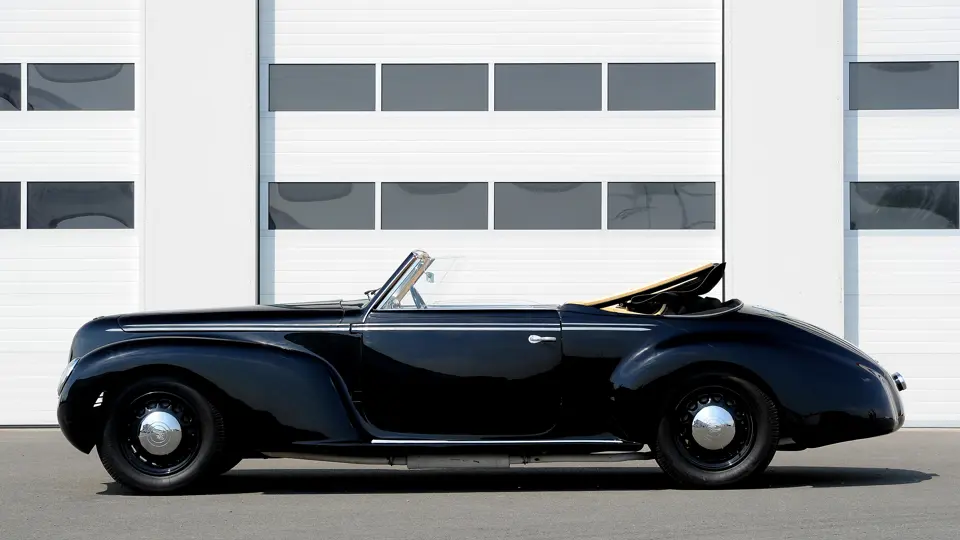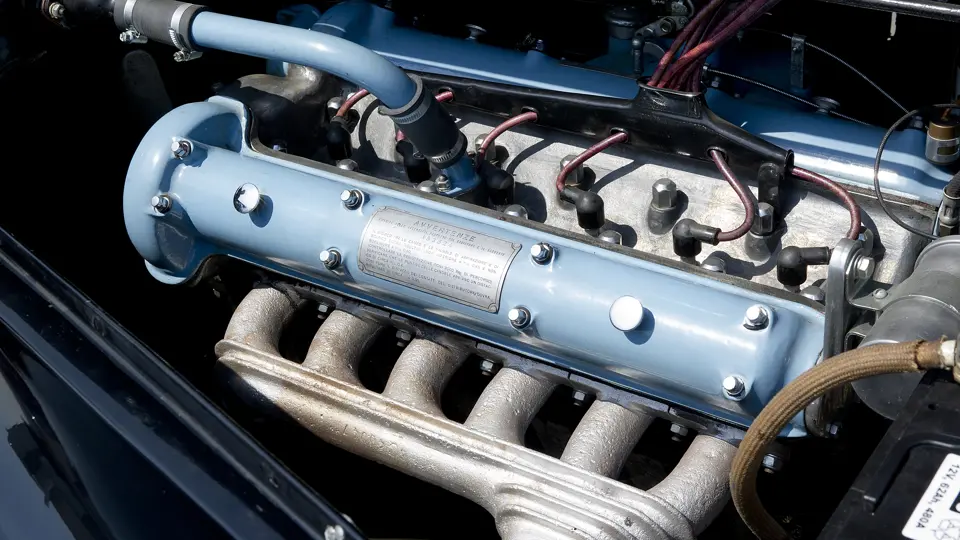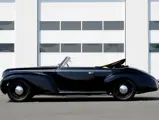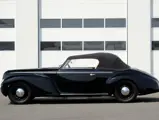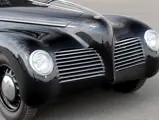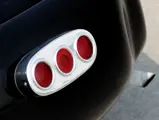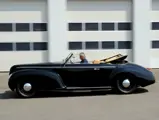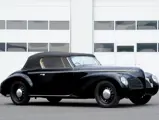87 hp, 2,443 cc DOHC six-cylinder, four-speed manual transmission, independent front suspension with trailing arms and coil springs, independent rear suspension with swing axles and longitudinal torsion bars, four-wheel hydraulic drum brakes. Wheelbase: 3,000 mm
• One of a handful of Alfa Romeo 6C 2500 Cabriolets built before WWII
• One of only two bodied in this style by Touring
• Confiscated in Hungary, left in Brno at war’s end
• Ground-up restoration in 2006, accompanied by invoices
• Single-family ownership since 1970s
Alfa Romeo’s 6C 2500 was the last model hand-built on a separate chassis. As such it was the final example of Vittorio Jano’s brilliant 6C 1500, which was first built in 1925 and whose basic design would lead Alfa Romeo to the top of the Grand Prix leader boards with the eight-cylinder P2 and P3 Tipo B Monoposto.
With the P2 launched in 1924, Jano looked to the 6C 1500 as a fast touring car, instantly recognisable as belonging to the same racing family. Launched at the Milan Motor Show in 1925 (though not produced until 1927), Jano ordered that it be built as “a small chassis of very high quality” and directed that no expense be spared in achieving that object.
The six-cylinder cars would prove the backbone of Alfa’s business.
Alfa Romeo had been taken over by the Italian government in 1933, and in coming years the company concentrated on aircraft engines and military supplies for the war in Africa. The six-cylinder engines grew gradually through the 1930s but retained their outstanding power-to-weight ratio and reputation for durability, being very successful in competition.
There were 1,058 6C 1500s built between 1927-1929, a further 1,626 6C 1750s between 1929-1933 and 1,707 6C 2300 models between 1934-1938, including 101 of the desirable 1938 Mille Miglia roadsters. The final model was the 6C 2500, and 2,594 of these were built between 1939-1953.
The 6C engines had a cast-iron block, topped with a double overhead camshaft aluminium head. The cams were chain-driven to the sprocket, then via spur gears. Carburetion ranged from a single downdraft Solex on the Turismo to three side-draft Weber carburettors on the Sport and Super Sport models. The front suspension used trailing arms, like the later Porsche and Aston Martin designs, and coil springs. The rear suspension involved swing axles and longitudinal torsion bars, and the cars had tube shocks all around.
The 6C 2500 coachwork bridges the curve of the rather fussy late 1930s clear to the 1950s, when the more formal envelopes were developed. These were the last coachbuilt Alfas, with bodies available from Pinin Farina, Stablimenti Farina, Boneschi and Touring.
All 6C 2500s were right-hand drive with four-speed transmissions. Ordinary models had synchromesh on the top two gears, while the Super Sport and Competizione were fully synchromesh.
The car on offer has a very interesting history. It was bodied in 1939 by Touring as a five-passenger cabriolet, smoothly evoking pre- and post-war design cues. While the original owner is unknown, the car wound up in Hungary at the time of the German invasion and was confiscated by the army of occupation, being abandoned at Castle Veveri in Brno at the time of the German retreat.
As that was in Czechoslovakia, the Alfa was seized by the state, though it was subsequently reported to be owned by an opera singer named Ivo Blahut. The cabriolet was bought by its present owner in 1974 and has remained in the same family ever since. It is believed to be one of only two bodied in this style by Touring, the other being in the U.S. Eventually, a ground-up restoration was undertaken in 2006, which is fully recorded. The car is known to have its original engine and is featured in Tito Anselmi’s definitive book Alfa Romeo 6C 2500, in which a photograph of the car is shown as delivered, wearing the body it presently carries.
With Alfa Romeo 6C 2500s of this period both scarce and desirable, it’s uncommon to find one that can be proven to be correct and still have its original running gear. Coupled with a recent, documented restoration, its future would seem to be one of considerable attention at any concours or tour that the new owner chooses to attend.

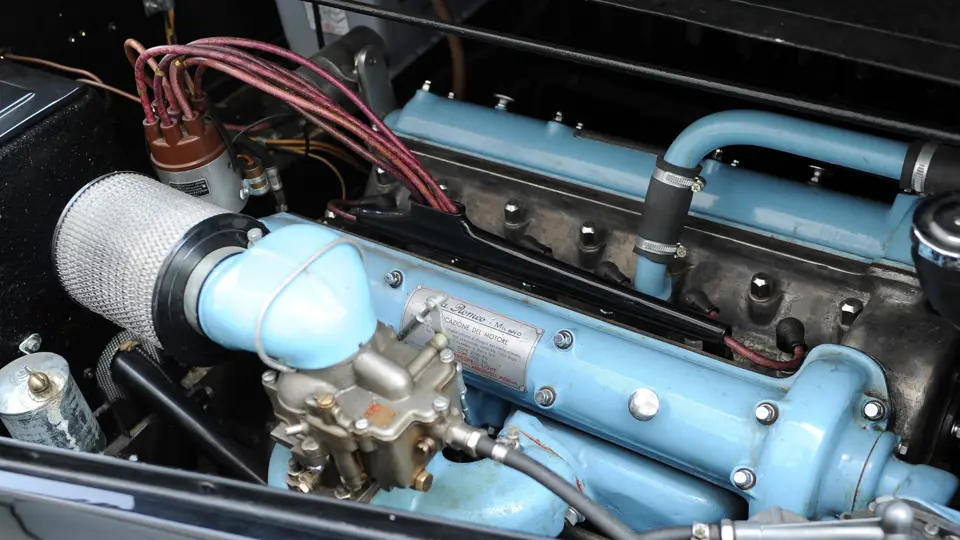
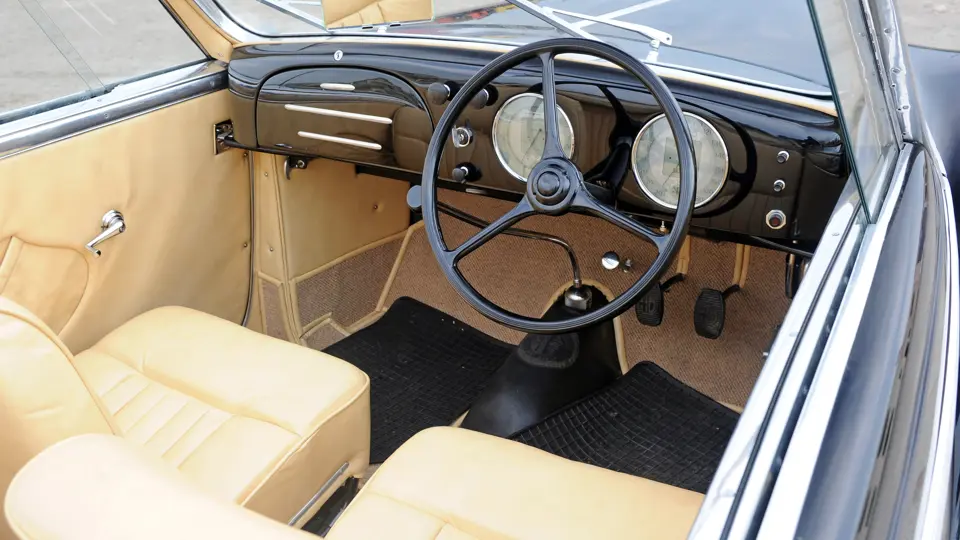

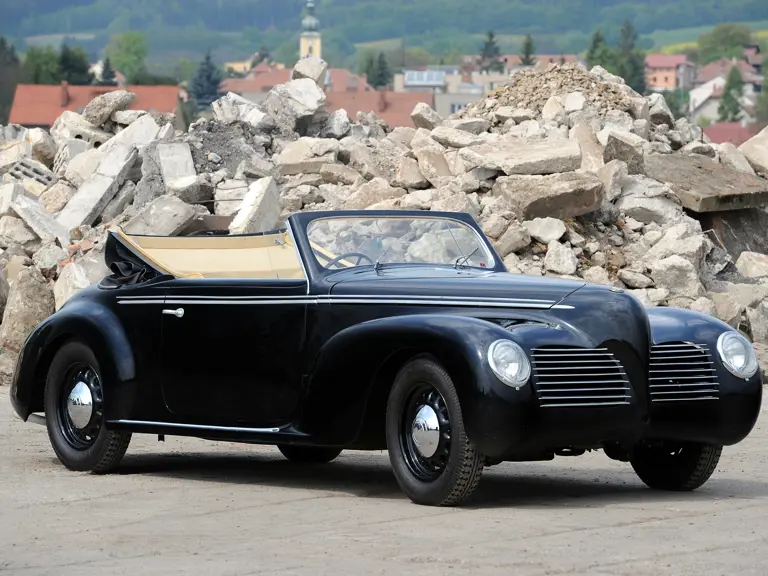


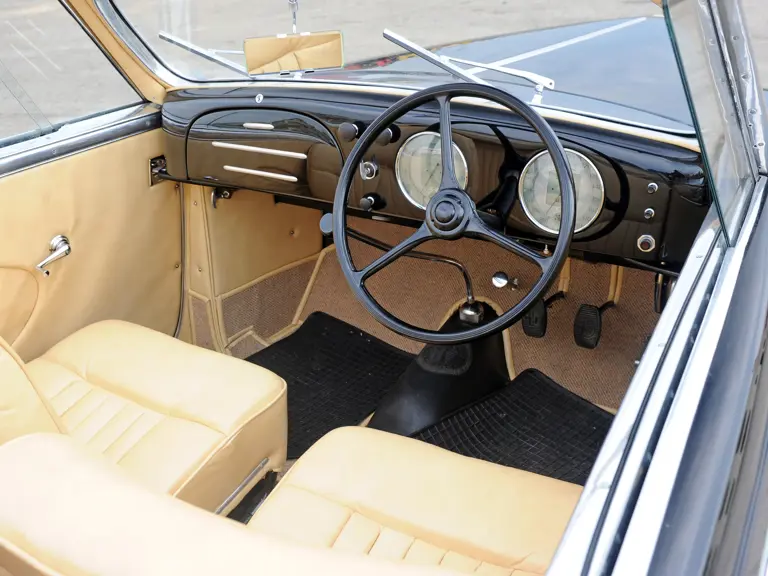


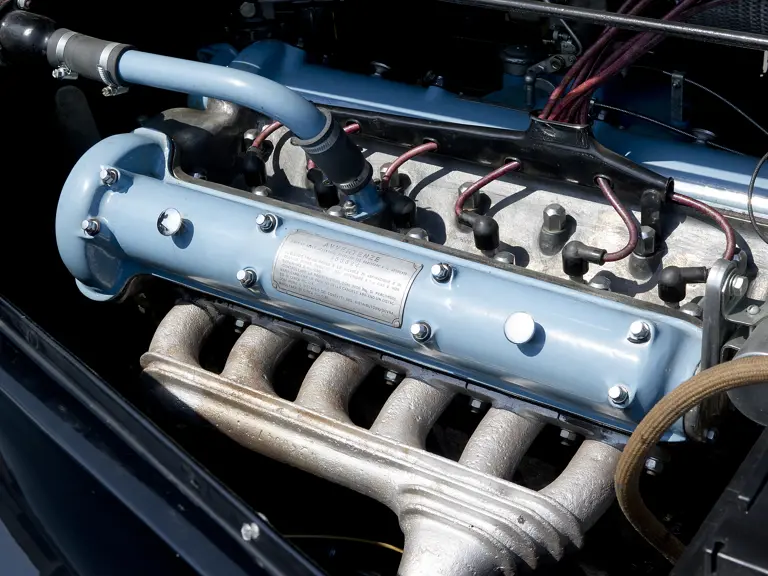
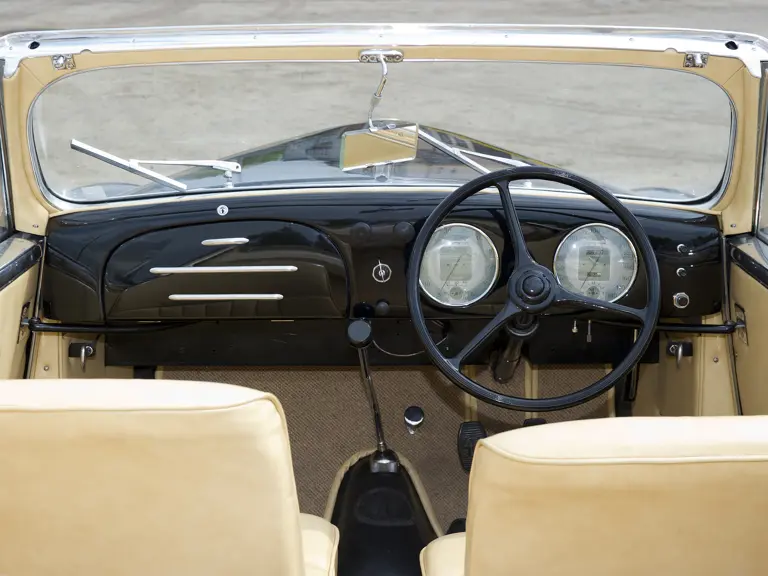
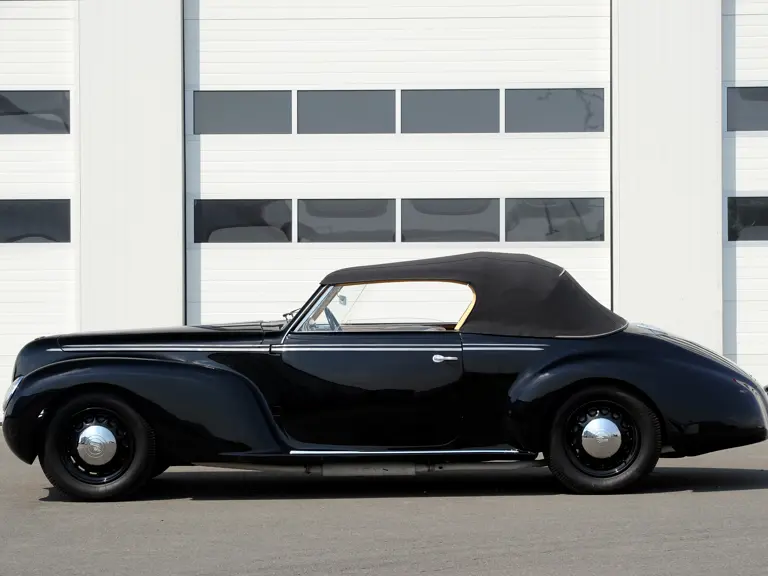
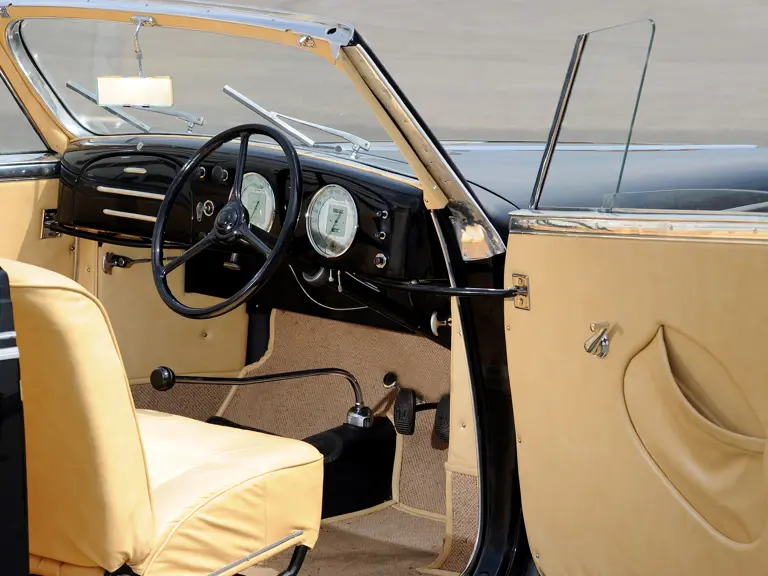



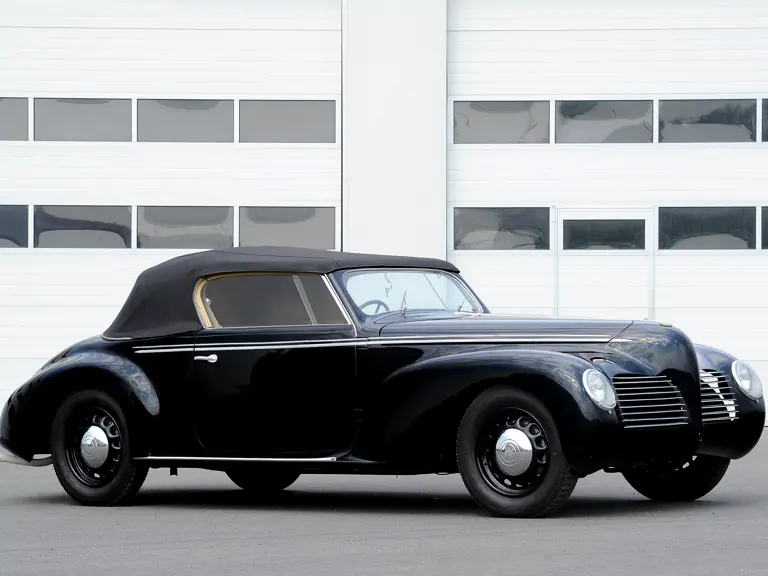
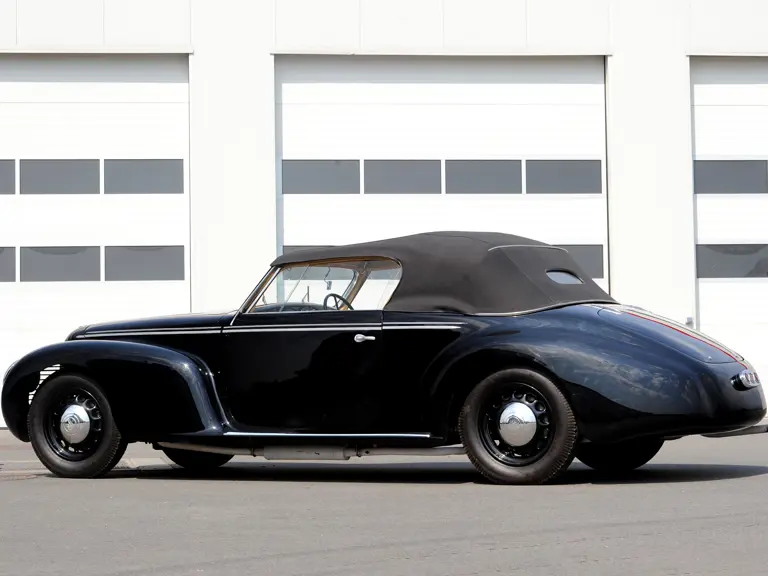
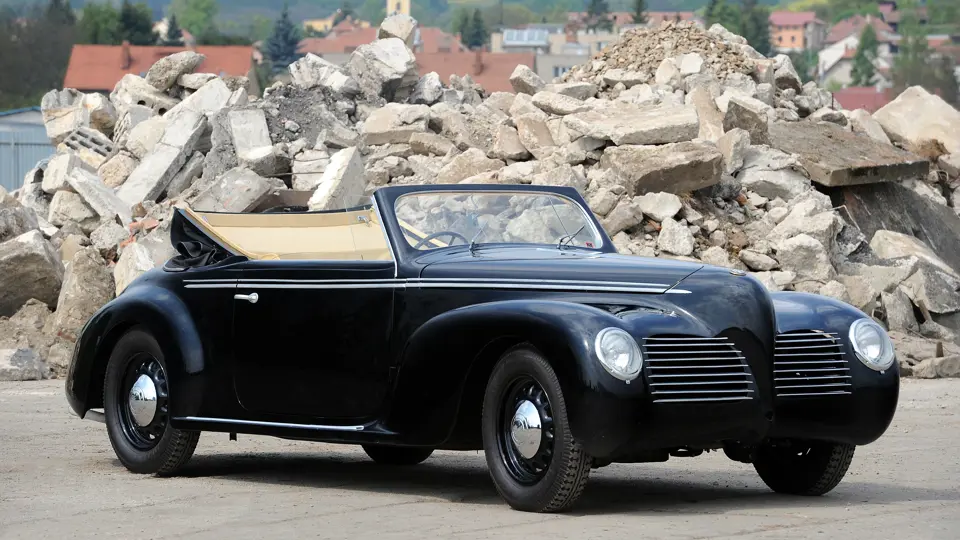
 | London, United Kingdom
| London, United Kingdom
